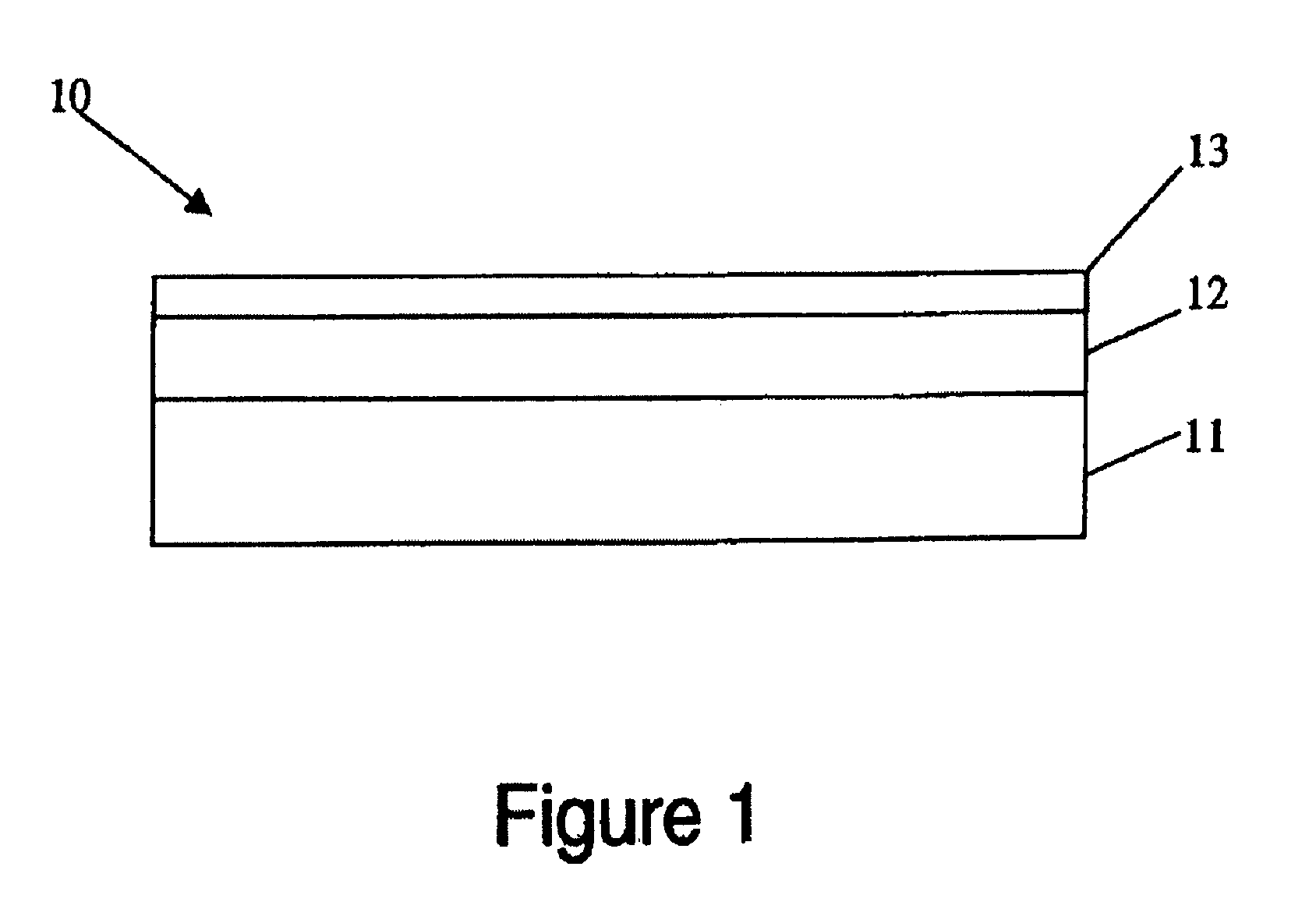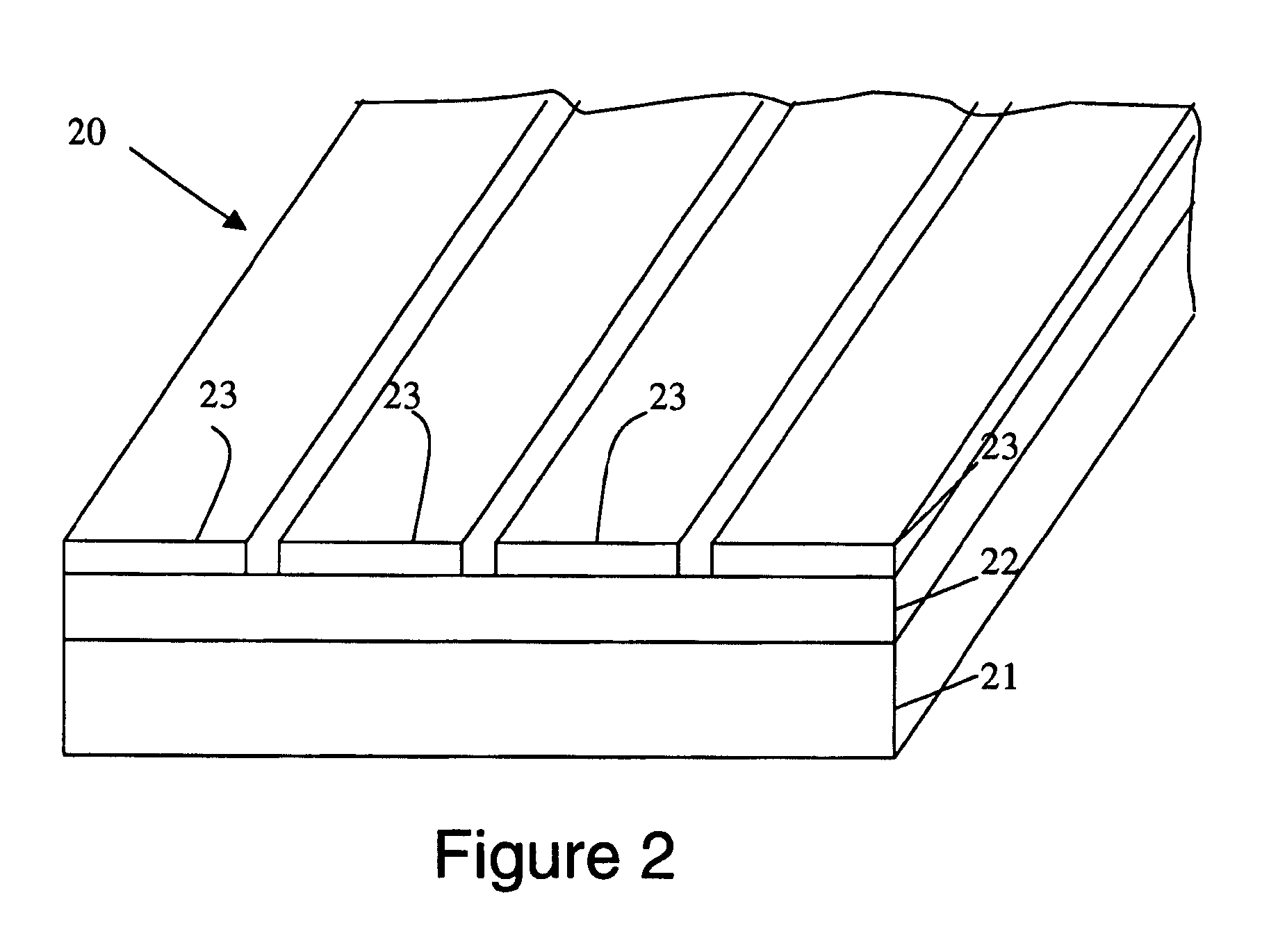Mesh-type stabilizer for filamentary coated superconductors
a superconductors and stabilizer technology, applied in the field of filamentary multilayer superconductors, can solve the problems of disrupting current transfer, high ac losses of superconducting film planes, and high hts wires that cannot be used in demanding hts applications, and achieve the effect of effectively transporting heat away
- Summary
- Abstract
- Description
- Claims
- Application Information
AI Technical Summary
Benefits of technology
Problems solved by technology
Method used
Image
Examples
Embodiment Construction
[0029]Second generation HTS wires that are manufactured using reel-to-reel thin film deposition techniques can attain considerable lengths. As the length of an individual segment of wire increases, the probability of a current-disrupting defect somewhere along the length of the wire increases. Localized current disruption may be caused by defects in the HTS layer, constrictions, thermal fluctuations, magnetic fields, electrical noise, or other causes of a local critical current depression in the superconducting layer. Therefore, the utility of second generation HTS wires is greatly enhanced by electrically stabilizing the wire to permit the bypassing of localized defects through an alternative electrically conductive pathway disposed along the length of the superconducting filament and in electrical contact with it. Previous techniques for stabilizing monolith HTS superconductor wires having a width of about 4 millimeters have made use of a sheet or layer of conducting material plac...
PUM
| Property | Measurement | Unit |
|---|---|---|
| width | aaaaa | aaaaa |
| diameter | aaaaa | aaaaa |
| diameter | aaaaa | aaaaa |
Abstract
Description
Claims
Application Information
 Login to View More
Login to View More - R&D
- Intellectual Property
- Life Sciences
- Materials
- Tech Scout
- Unparalleled Data Quality
- Higher Quality Content
- 60% Fewer Hallucinations
Browse by: Latest US Patents, China's latest patents, Technical Efficacy Thesaurus, Application Domain, Technology Topic, Popular Technical Reports.
© 2025 PatSnap. All rights reserved.Legal|Privacy policy|Modern Slavery Act Transparency Statement|Sitemap|About US| Contact US: help@patsnap.com



